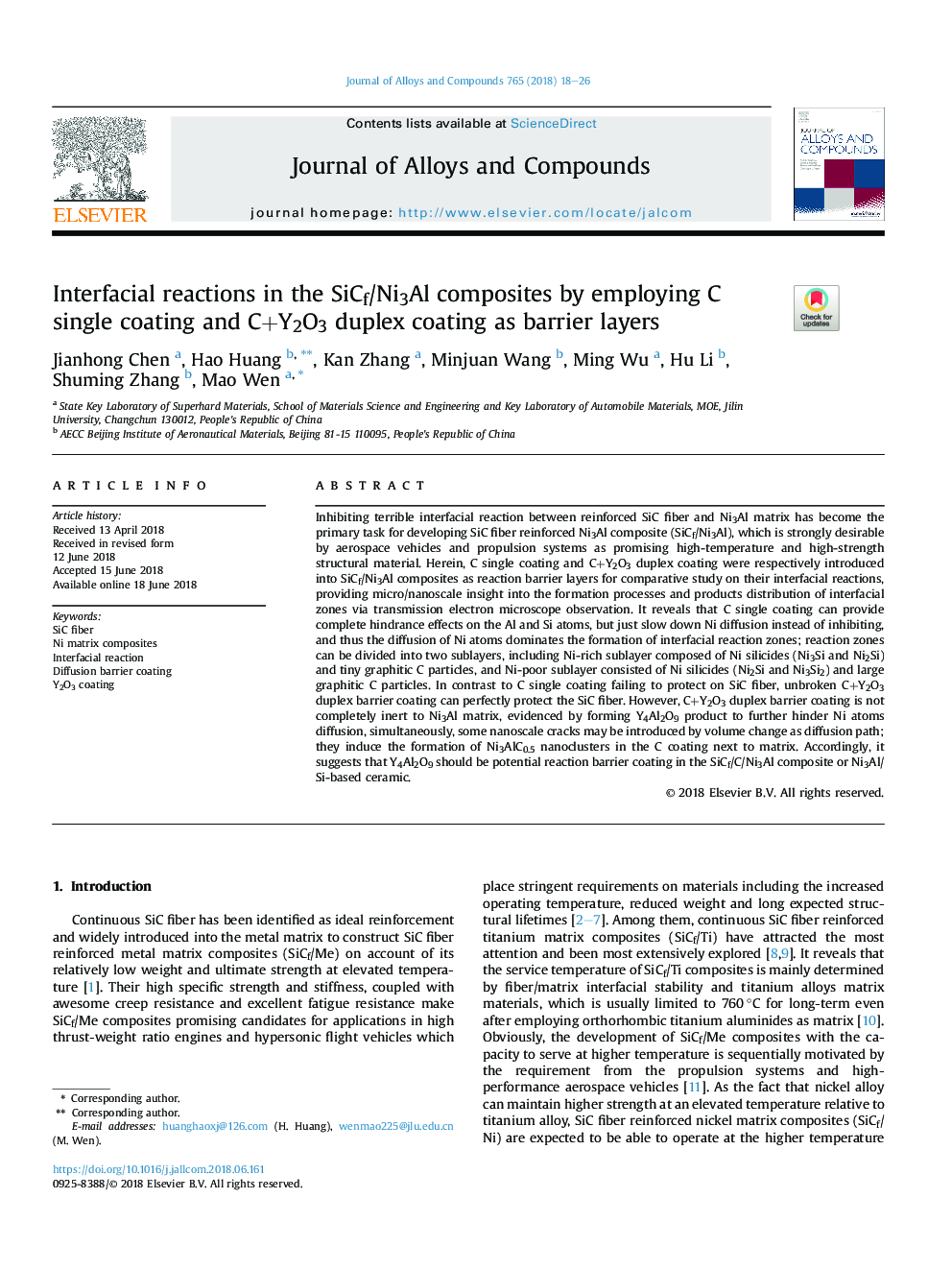| کد مقاله | کد نشریه | سال انتشار | مقاله انگلیسی | نسخه تمام متن |
|---|---|---|---|---|
| 7990458 | 1516129 | 2018 | 9 صفحه PDF | دانلود رایگان |
عنوان انگلیسی مقاله ISI
Interfacial reactions in the SiCf/Ni3Al composites by employing C single coating and C+Y2O3 duplex coating as barrier layers
دانلود مقاله + سفارش ترجمه
دانلود مقاله ISI انگلیسی
رایگان برای ایرانیان
موضوعات مرتبط
مهندسی و علوم پایه
مهندسی مواد
فلزات و آلیاژها
پیش نمایش صفحه اول مقاله

چکیده انگلیسی
Inhibiting terrible interfacial reaction between reinforced SiC fiber and Ni3Al matrix has become the primary task for developing SiC fiber reinforced Ni3Al composite (SiCf/Ni3Al), which is strongly desirable by aerospace vehicles and propulsion systems as promising high-temperature and high-strength structural material. Herein, C single coating and C+Y2O3 duplex coating were respectively introduced into SiCf/Ni3Al composites as reaction barrier layers for comparative study on their interfacial reactions, providing micro/nanoscale insight into the formation processes and products distribution of interfacial zones via transmission electron microscope observation. It reveals that C single coating can provide complete hindrance effects on the Al and Si atoms, but just slow down Ni diffusion instead of inhibiting, and thus the diffusion of Ni atoms dominates the formation of interfacial reaction zones; reaction zones can be divided into two sublayers, including Ni-rich sublayer composed of Ni silicides (Ni3Si and Ni2Si) and tiny graphitic C particles, and Ni-poor sublayer consisted of Ni silicides (Ni2Si and Ni3Si2) and large graphitic C particles. In contrast to C single coating failing to protect on SiC fiber, unbroken C+Y2O3 duplex barrier coating can perfectly protect the SiC fiber. However, C+Y2O3 duplex barrier coating is not completely inert to Ni3Al matrix, evidenced by forming Y4Al2O9 product to further hinder Ni atoms diffusion, simultaneously, some nanoscale cracks may be introduced by volume change as diffusion path; they induce the formation of Ni3AlC0.5 nanoclusters in the C coating next to matrix. Accordingly, it suggests that Y4Al2O9 should be potential reaction barrier coating in the SiCf/C/Ni3Al composite or Ni3Al/Si-based ceramic.
ناشر
Database: Elsevier - ScienceDirect (ساینس دایرکت)
Journal: Journal of Alloys and Compounds - Volume 765, 15 October 2018, Pages 18-26
Journal: Journal of Alloys and Compounds - Volume 765, 15 October 2018, Pages 18-26
نویسندگان
Jianhong Chen, Hao Huang, Kan Zhang, Minjuan Wang, Ming Wu, Hu Li, Shuming Zhang, Mao Wen,